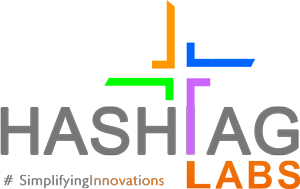Flutter vs. Kotlin – Making the Right Choice for Your Android Development
Introduction
As mobile app development continues to thrive, developers are presented with an array of tools and frameworks to choose from. For Android development, two prominent options are Flutter and Kotlin. Both have their unique strengths and weaknesses, making the decision of which one to choose a critical aspect of the development process. In this article, we will compare Flutter vs. Kotlin, exploring their features, use cases, and benefits to help you make an informed choice for your Android development project.
1. Flutter: A Brief Overview
Flutter is an open-source UI software development kit developed by Google. It allows developers to create visually appealing and high-performance native applications for both Android and iOS from a single codebase. Flutter uses the Dart programming language, which is known for its simplicity and efficiency. The framework provides a rich set of pre-designed widgets, making it easier to build engaging and responsive user interfaces.
2. Kotlin: A Brief Overview
Kotlin, on the other hand, is a statically typed programming language developed by JetBrains. It is fully interoperable with Java and has become an official language for Android app development. Kotlin boasts concise syntax, null safety, and enhanced developer productivity. Being 100% Java-compatible, developers can seamlessly integrate Kotlin into existing Java projects.
3. Pros and Cons of Flutter
Flutter’s popularity has grown rapidly due to its many advantages:
Pros:
- Single codebase for Android and iOS development, reducing development time and cost.
- Expressive and customizable widgets enable building visually rich and responsive UIs.
- Hot reload feature allows real-time code changes and instant previewing, enhancing developer productivity.
- Flutter’s high-performance rendering engine results in smooth and fast app performance.
- Comprehensive documentation and a growing community provide extensive support.
Cons:
- Flutter apps may have a larger file size due to the inclusion of the Dart runtime.
- As Flutter is a relatively newer framework, finding specialized developers might be challenging.
4. Pros and Cons of Kotlin
Kotlin’s popularity among Android developers is well-deserved, as evidenced by the following advantages:
Pros:
- Seamless integration with existing Java codebases allows a smooth transition to Kotlin.
- Concise and expressive syntax reduces boilerplate code and enhances code readability.
- Kotlin’s null safety feature reduces the risk of null pointer exceptions, making apps more robust.
- Interoperability with Java enables leveraging existing Java libraries and frameworks.
- Growing community support and strong backing from JetBrains ensure continuous improvements.
Cons:
- Although Kotlin offers excellent Java interoperability, integrating with third-party libraries might sometimes be challenging.
- The learning curve might be steeper for developers new to Kotlin or those with limited experience in functional programming.
5. Use Cases: Flutter vs. Kotlin
The choice between Flutter and Kotlin often depends on the nature of the project and specific requirements:
Flutter Use Cases:
- Cross-platform mobile applications, especially for startups and businesses with limited resources.
- Apps that require a high level of customization in UI and user experience.
- Projects with strict deadlines that can benefit from Flutter’s hot reload feature.
Kotlin Use Cases:
- Existing Android projects that aim to improve code readability and maintainability.
- Apps that require tight integration with native Android features and APIs.
- Projects where Java interoperability is essential for seamless migration.
Conclusion
In the end, the choice between Flutter and Kotlin largely depends on the specific needs of your Android development project. Flutter excels in cross-platform development and creating visually stunning UIs, while Kotlin offers seamless integration with Java and better interoperability for existing Android projects. Consider the scope, complexity, and long-term objectives of your app to make an informed decision.
Both Flutter and Kotlin have proven their worth and are backed by strong developer communities, ensuring continuous improvements and support. Whichever option you choose, it’s essential to stay up-to-date with the latest advancements in the respective technologies and leverage them to create cutting-edge Android applications.


